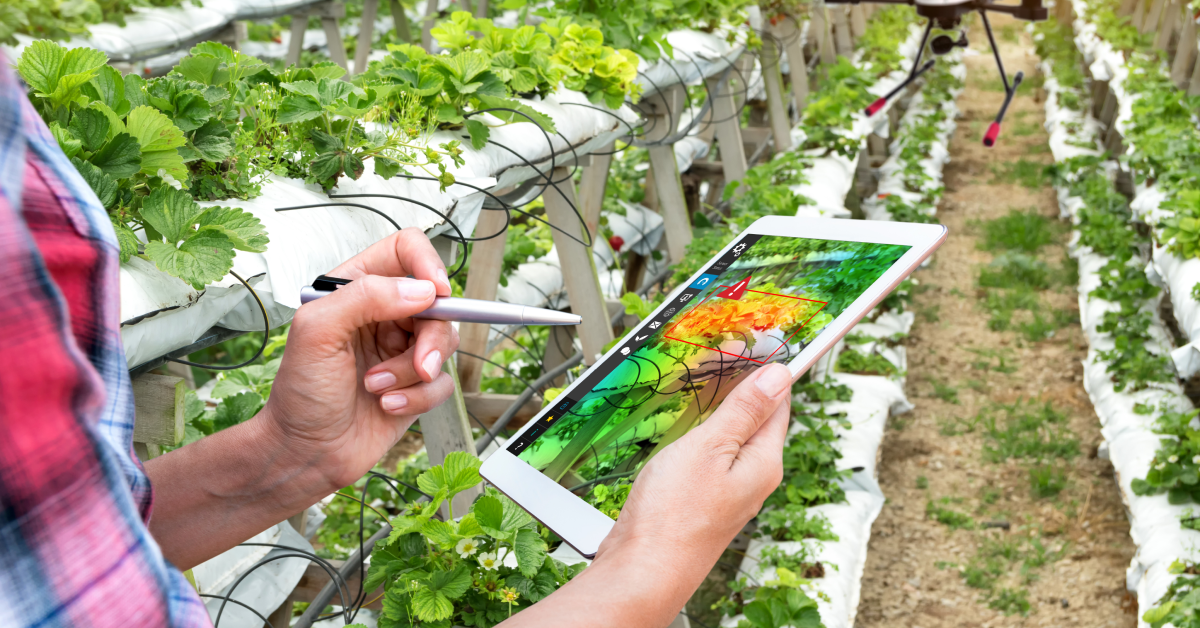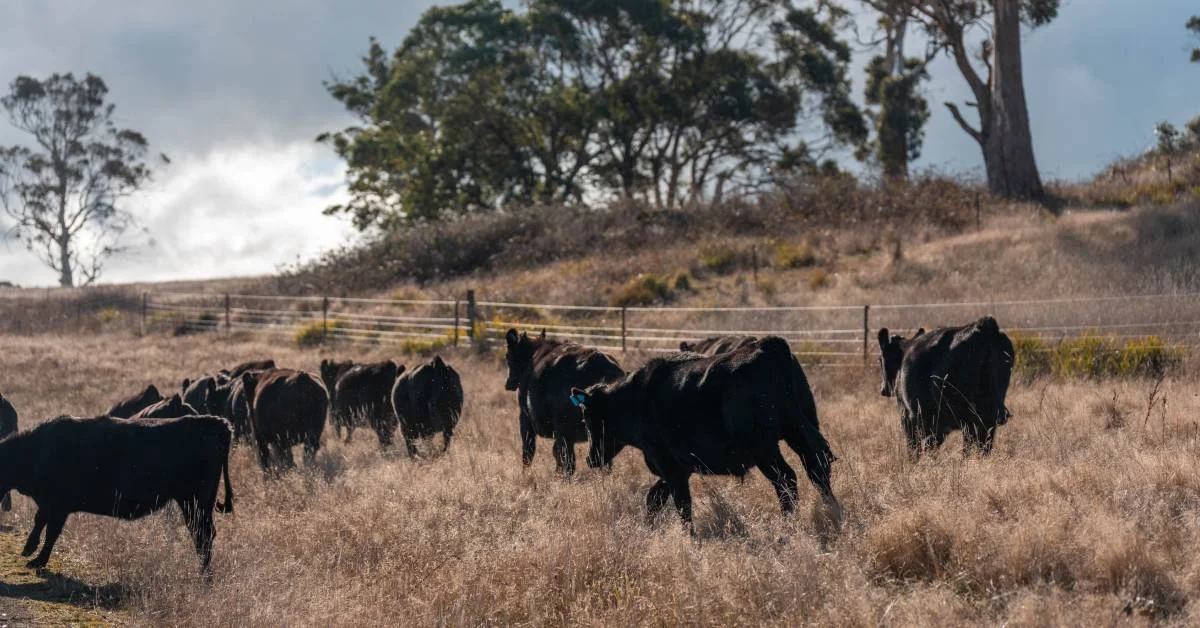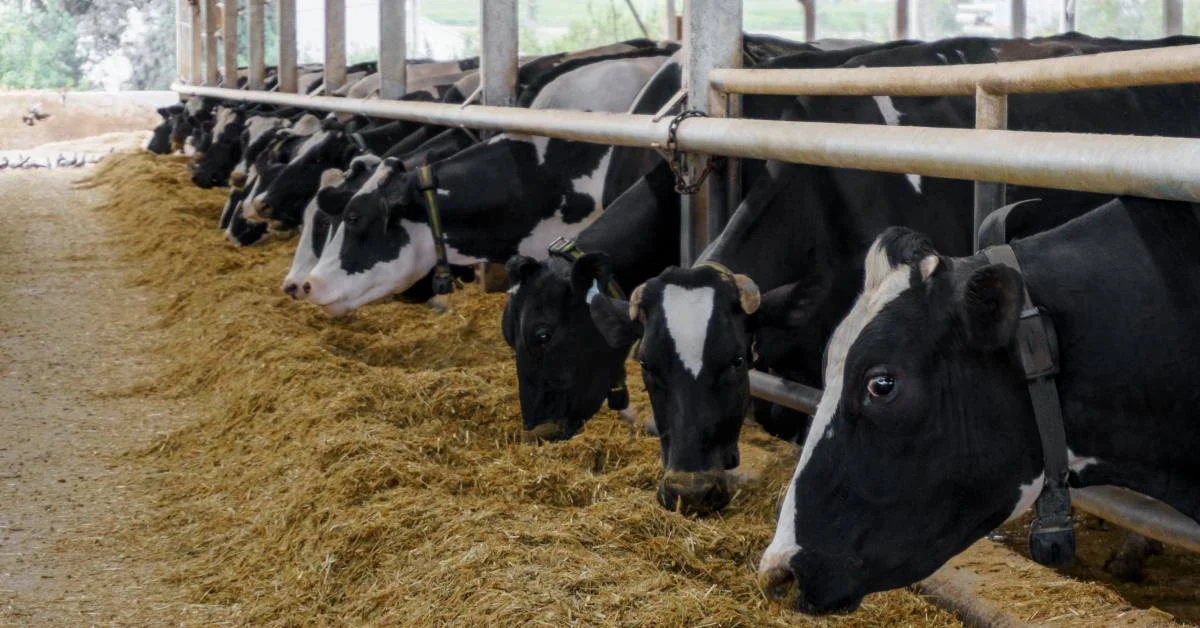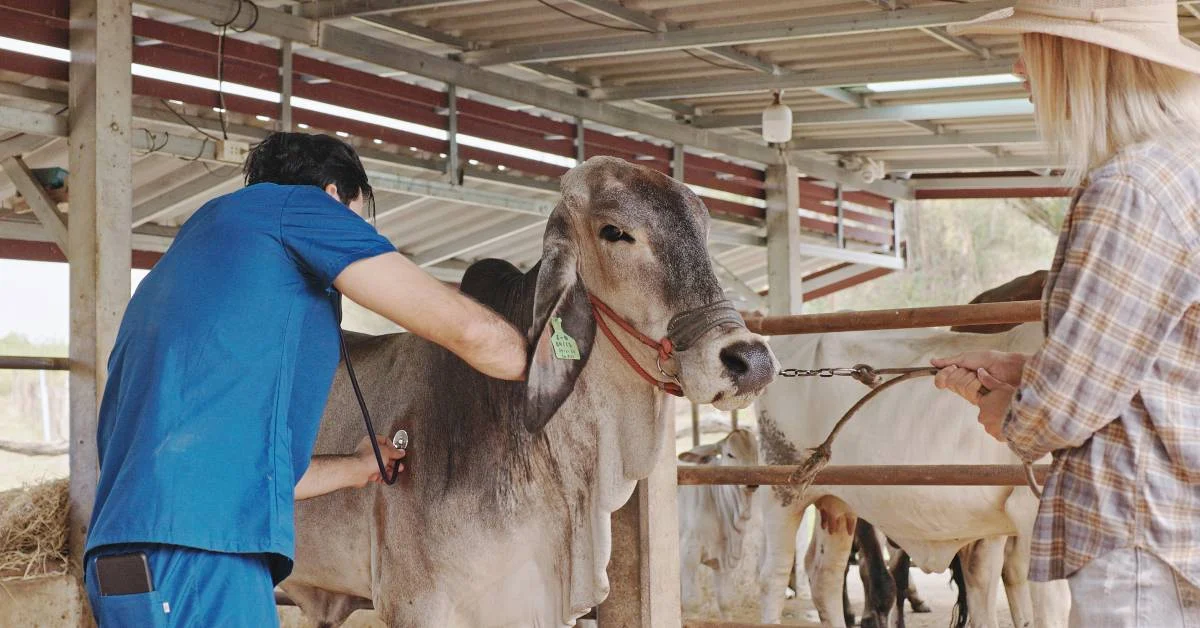Precision agriculture is a new game changer in the current fast-changing agricultural environment. It moves agriculture from traditional technology to cutting-edge technologies that farmers used in the past, which might not be able to meet modern production requirements because of different factors.
Firstly, precision farming, which is its core, uses the benefits of technology, GPS, sensors, drones, and data analytics to create best practices for farm management and attain maximum productivity while minimizing the use of resources and their impact on the environment.
The critical point in the precision agriculture system is implementing data-driven decision-making. Nowadays, agriculture relies on up-to-date farm data to guide actions on crop management, irrigation, pesticides, and input utilization.
Utilizing the data insight, farmers can reduce inputs, save production costs, and cut down on waste, improving farm production efficiency. ERP system integration has become instrumental in managing agricultural operations during precision farming.
ERP systems are single-platform software solutions that complement each other by integrating all business functions, such as finance, procurement, human resources, and inventory management.
ERP in the agricultural industry offers smoother cooperation and communication among departments, which promotes eliminating redundant operations and increasing efficiency goals.
In addition, ERP software systems introduce advanced information on essential data through real-time observations such as crop yields, stock levels, and market demand. As a result, farmers would have much knowledge to make intelligent decisions.
Supply chain integration in ERP will also assist precision agriculture by offering real-time collaboration with suppliers, distributors, and all the other stakeholders in the agricultural value chain. This can help farmers achieve peak efficiency, reduce costs, and avoid any circumstance that may lead to a low-quality product.
Understanding ERP Systems
Enterprise Resource Planning (ERP) refers to a comprehensive software package that helps service the core of various organizational functions through integration and providing an end-to-end information source.
In the center of the picture, ERP systems have a standard and valuable feature: they feature central platforms that manage vital functions such as financial management, inventory management, procurement management, human resources, customer relationship management, and more.
The scalability and adaptability of ERP systems are critical factors in precision agriculture, where farm operations can differ widely by size and scope. As ERP systems were designed to increase alongside the organization, farmers could start with simple ones and add features or modules as their use expanded.
In addition, ERP solutions are flexible in terms of application deployment options, which are on-premise, cloud-based, and hybrid. Therefore, these farmers can choose the deployment models that fit their needs, capacities, available infrastructure, and limits.
The primary functions of ERP systems include:
Centralized Data Management
The ERP systems are at the center of the database, formed by the various functionalities and departments that consolidate the data from different places in the organization. This will allow the organization to access data quickly, achieving information uniformity.
Process Automation
ERP systems replace posterior clerk functions and provide auto-applying workflows, thus saving money and improving workflow.
ERP software automates various functions, such as invoicing, payroll, and inventory. This is usually done to help organizations streamline their operations and make minimal errors.
Real-Time Reporting and Analytics
An ERP system will present its capability report and quickly read into the performance of key metrics and trends. This allows researchers to make habitual healthy decisions and strategic planning based on accurate data.
Integration of Business Processes
An essential role of ERP software is providing a straight integration of business processes. Through integrating finance, inventory, procurement, production, and other talents, ERP systems play a vital role in bringing people together working across departments, revealing unequaled efficiency and productivity.
ERP system integration is a modular approach, where its functional parts are responsible for different functions or procedures. For example, a system could consist of four modules, including accounting, inventory management, sales, and human resources, all developed to solve specific problems within the different departments.
Precision Agriculture: A Brief Overview
Precision agriculture, or intelligent farming, is a strategy for producing crops precisely by analyzing which technologies would optimize resource use, increase yield, and minimize environmental impact.
At the center of precision agriculture is making farming more effective and sustainable by applying scientific data to agricultural processes and calculating environmental inputs.
The primary goals of precision agriculture include:
Optimized Resource Utilization
Precision agriculture is concerned with the maximum utilization of resources; thus, water, fertilizers, pesticides, and energy are applied efficiently.
By using all the 4Rs practices of the right timing, adequate rate of the inputs, and application at the right place, farmers can save inputs and reduce greenhouse gas emissions as they maintain or even increase their productivity.
Increased Yield
Precision agriculture uses computers and data science to determine a crop’s needs precisely. In return, farmers develop management methods compatible with maximizing their crops’ yield.
Using canopy-level monitoring and crop-level within-field management, farmers can implement a site-specific strategy to enhance their production.
Reduced Environmental Impact
Precision farming aims to decrease environmental misconceptions by including sustainable practices and avoiding water, chemicals, and other inputs.
Precision agriculture’s key facets, such as optimizing resource use and minimizing the discharge of runoffs, erosion, and pollution, help stewardship and conservation of the environment.
Use of Technology in Collecting Data for Precision Farming
Technology’s leading role in precision agriculture is to profit farmers. The tools and systems help farmers promptly obtain, analyze, and respond to data.
Key technologies used in precision farming include:
1. Sensors
Grids are placed in an open field to gather information through sensors, such as soil moisture readings, temperature, nutrient levels, and other environmental factors.
Sensor technologies offer essential real-time data points on crop health and soil conditions. Farmers can use this data to make accurate irrigation, fertilization, and pest management decisions.
2. GPS (Global Positioning System)
Through GPS technology, farmers can draw field maps using specialized equipment that tracks equipment movements, precisely targeting inputs based on geographic coordinates.
With the GPS tool supported by hardware and software, farmers can easily apply variable rates, adjust planting and harvesting patterns, and create maps for plowing and analyzing fields.
3. Drones
The use of uncrewed flying vehicles equipped with high-quality cameras, the so-called UAVs or drones, for high-resolution aerial imagery originates from fields, which in turn help farmers get beneficial visual data for crop monitoring and analysis.
Drones are equipped to perceive crop stress, track insect attacks, and evaluate plant conditions. They warn farmers of problems they can address timeously and improve crop yields.
Challenges in Precision Agriculture
Managing data from multiple sources in precision agriculture presents a significant challenge due to their complexity and diversity.
Farmers rely on data collected from various sources such as field sensors, weather stations, machinery, satellite imagery, and agronomic models to make informed decisions about crop management.
However, integrating and managing data from these disparate sources can be complex and resource-intensive.
Below are the challenges in precision agriculture that require investments in data infrastructure, technology, and expertise to effectively use the power of data for improved crop management and productivity in modern farming practices:
Managing Data from Multiple Sources
Data collected from diverse sources such as field sensors, weather stations, machinery, satellite imagery, and agronomic models is essential in precision farming. These sources generate vast amounts of data in different file formats and arrangements.
Combining and maintaining the data thoroughly from these diverse sources might be highly complex and resource-consuming.
Farmers dealing with the problem of collecting data from the various sources, which they keep, process, and analyze to discover actionable insights that help in crop management, are now placed on a higher pedestal.
Data Volume and Diversity
Since the sensors and devices in the field generate data in different formats and volumes, they constitute significant fieldwork problems.
The sensors may read the data on indications like soil moisture content, temperature, mineral proportion, vegetable health, and pest attack. The sensors installed in varied farmlands can generate a lot of data; hence, decision-making using this data is tedious.
To swim the ocean of information, you need dedicated hardware and software with complex algorithms to quickly process and analyze the multitudes of information.
Compatibility and Integration
Apart from that, one of the issues with precise agriculture will be the sure and smooth combination of information from various vendors and systems.
Information gathered from diverse sensors and municipal devices could be in multiple formats, orders, and protocols, which hinders unifying and integrating into a cohesive cluster. Farmers often experience a common problem when collecting and combining data from different sources.
Farmers must try to convert and manage data effectively from different formats. Establishing the possibility of interoperability among different manifestations and equipment is a fundamental task of data integration and analytics.
ERP System Integration with Precision Farming Tools
The ERP system integration consensus with precision farming instruments supplies the most effective ways to boost productivity, improve management, and sustain farming.
Besides, precision agriculture is becoming coupled with advanced technologies. In reality, farming engineers are more likely to need specific solutions, especially ones made for their field’s given peculiarities.
Folio3 AgTech is the pack leader in this change of scenario, providing advanced ERP solutions that can work with precision farming tools and drive the evolution of how farmers manage their operations.
Data Aggregation and Centralization
ERP systems allow data consolidation from various precision farming tools, such as soil moisture sensors, yield monitors, weather data, satellite images, and machine logs.
These electronic tools generate much data on soil conditions, crop health issues, weather conditions, machinery performance, and other essential pieces of the puzzle.
ERP systems can connect different software platforms using an API interface or importing data mechanisms, and thus, they do not gather and combine that data in a central repository. The core reason for the vital role of data centralization is more accurate decision-making for precision farming.
Among the most essential advantages of centralizing data is that farming and agronomy specialists can be granted a unified perspective on their operations. Thus, clear views of the operations will be present, making analysis, trend identification, and pattern recognition very possible.
Folio3 AgTech provides an integrated data management platform by breaking down the barriers for combining data from various sources, e.g., in-field sensors, yield monitors, and weather stations, into the ERP system integration.
This collaboration allows the farmers to have a complete overview of their operations. Thus, they can improve their efficiency through informed decisions and better management.
Inventory Management
The precision agriculture sector requires accurate inventory tracking and monitoring of seeds, fertilizers, and pest management.
Through Folio AgTech’s ERP solutions, farmers can track and manage their seed, fertilizer, and pesticide materials in advance. The real-time supervision of inventory figures eliminates the unproductive consumption of usable items and maximizes the productive use of already-made items.
The visibility of inventory levels in real-time helps warehouses prevent shortages, overstocking, and timely supply of inputs for cultivating crops.
The ERP systems enabled real-time inventory visibility operations and offered various advantages, such as better planning, enhanced operational efficiency, and reduced operating expenses.
Using current data on stock inventories (inputs), farmers can make timely and accurate purchasing, storage, and utilization decisions. Besides this, the real-time visibility feature permits better coordination among different departments and stockholders, promoting the process flow.
Financial Management
As a whole, ERP systems are finance-related processes involved with precision agriculture, including equipment procurement, sales, invoicing, and budgeting.
Such systems contain modules that allow tracking accounts payable, accounts receivable, general ledger, and financial reporting. ERP system integration provides compliance and accuracy by automating economic processes and adapting banking systems.
They help precision agriculture count costs and budgets, achieving optimal economic performance. Agriculture traders will track expenses related to input buying, equipment maintenance, wages of hired workers, and the cost of crops being farmed.
The budgeting features allow users to establish target values, use funds wisely, and track their spending against budgets. Folio3 AgTech Financial ERP systems make the operation more transparent and help you purchase sold bills more efficiently and effectively.
The processes help farmers maintain correct financial records, undertake cost analysis, and effectively manage precision agriculture budgeting. ERP system integration contributes significantly to supply chain management designed for precision agriculture, including procurement, stocking, delisting, and inventory control.
Supply Chain Integration
They systematize the supply chain process by digitizing the workflows, optimizing the inventory levels, and creating a platform for collaboration between wholesalers and distributors.
ERP modules include functions that let you track all orders, manage vendor relationships, and monitor delivery schedules.
The proper supply of inputs promptly is crucial for farming efficiencies, and the ERP systems provide broad applicability to ensure smooth supply chain operations that meet agriculture demands.
Farmers can quickly get various products, negotiate fair rates, and track shipments with an ERP platform. Possible first sentence: With ERP system integration, farmers benefit from easy access to a wide range of goods, favorable terms, and the ability to track shipments.
First and foremost, successful supply chain integration helps to boost production, reduce the time from order placement to actual delivery, and minimize costs linked with procurement and distribution functions.
Through Folio3 AgTech’s ERP solutions, supply chain management stays on course while managing materials procurement, distribution, and logistics activities. Timely input supply is covered, leading to higher farm efficiency and fewer operational stoppages.
Decision Support
When used with them, ERP systems would support more rational decision-making via data integration and, for instance, precision agriculture.
These platforms mainly employ sophisticated analysis—machine learning algorithms and predictive modeling to uncover farming trends, patterns, and outliers.
Decision support modules provide dashboards, reports, and visualizations to display critical information and system dynamics in a user-friendly context. In precision agriculture, ERP systems give farmers decisions based on predictive capabilities for plant protection and harvest perfection.
ERP systems can analyze historical data, environmental factors, and crop health indicators to foretell future yields, detect pest infestations, and trim the planting schedule.
For the AgTech industry, Folio3 offers ERP system integration data from multiple sources and enables farmers to make informed decisions based on gathered and processed information.
Data science tools, particularly predictive analysis, contribute to crop management and multiplication optimization, thus allowing farmers to make decisions based on accurate data.
Compliance and Traceability
An ERP system integration contributes to compliance with the quality and quantity guidelines for the agriculture system. These guidelines govern, among other things, the amount of pesticide, water, and safety standards that apply to the food produced.
These data platforms have facilities for creating, tracking, and submitting documentation for compliance activities.
This helps demonstrate compliance with industry regulations.
With their traceability functions, ERP systems can record agricultural products’ source, movement, and handling as they traverse the supply chain.
The compliance and traceability functions offered by ERP system integration will ensure farmers comply with laws, minimize exposure, and improve product quality and safety through the supply chain management system.
ERP systems record data at every level, from the farm gate to the end consumer. This could help farmers track products’ origin, identify issues, and promptly respond to recalls and audits.
The compliance tracking processes and chain-of-custody functionalities enable transparency, accountability, and integrity in agricultural operations, boosting confidence among the end users and relevant regulatory bodies.
Folio3 AgTech ERP system integration tool establishes compliance with regulatory guidelines. Pesticide usage and the environment are the specific elements in this frame.
Also, the notion of traceability features is well developed and leads to improving food safety and quality control, thus including consumers and other stakeholders in the process.
Benefits of ERP Sytem Integration in Precision Agriculture
The benefits of ERP system integration in precision agriculture are multifaceted and impactful, contributing to the optimization of farming operations and the enhancement of overall productivity and profitability:
Improved Operational Efficiency
ERP system integration allows for the unification of different fencing processes, such as inventory control, purchasing, storage, and finance, which increases efficiency and saves resources.
Shopping management and data processing in ERP systems streamline the workflow, making it more efficient.
Enhanced Decision-Making Through Real-Time Insights
Now, farmers can access quick information through ERP system integration, eliminating the problem of making hasty decisions. They base their decisions on real-time data and analytics.
Using KPIs and trends analysis, farmers can decide on planting schedules and irrigation technologies and quickly respond to atmospheric changes, boosting crop volumes and quality.
Reduction in Manual Data Entry and Errors
ERP system integration limits unnecessary data entry and lowers the probability of human error often associated with backroom databases.
IT systems for ERP allow functionalities such as data capture and validation, guaranteeing accurate and reliable data, which contrasts with the inefficiencies and inaccuracies of manual input.
Better Resource Allocation (Water, Fertilizers, etc.)
Farmers can manage their resources very well with the help of an ERP system, which leads to resource business optimization by giving them an idea about resource utilization and efficiency.
Soil moisture, weather, and crop nutrient analysis will streamline irrigation and fertilizer schedules, help discard resources, avoid damage, and reduce environmental impact.
Increased Yield and Profitability
ERP systems’ attribute multiplication can help farmers improve crop yielding and profitability. Farmers can maximize their resources by optimizing resource utilization, avoiding wastage, and making data-driven decisions. This will increase their output and, in turn, improve their financial performance.
Conclusion
ERP system integration ultimately drives the precision agriculture revolution by supplying software that can handle all the details, integrate data for decision-making, and optimize resources.
ERP and precision farming instruments in high-tech agriculture must interact smoothly to maximize efficiency and productivity.
Technology development remains a critical area that needs to be investigated to fully utilize the ERP system’s capabilities. Therein lies the potential for sustainable growth and innovation in the agricultural sector.
As ERP technology is implemented, farmers become open to even more possibilities for increasing outputs, optimizing expenditures, and surviving all environmental and market factors.
FAQs
What Does ERP Stand for in Agriculture?
ERP stands for Enterprise Resource Planning in Agriculture, facilitating streamlined management of farm operations.
What is the Role of IoT in Precision Agriculture?
IoT (Internet of Things) plays a crucial role in precision agriculture by enabling real-time monitoring and data collection from agricultural assets and processes.
What are the Technologies for Precision Agriculture?
Technologies for precision agriculture include IoT sensors, drones, GPS, and AI-driven analytics tools for optimizing farming practices.
What is the Most Essential Function of an ERP System Integration?
The most essential function of an ERP system in agriculture is to centralize and integrate data from various farm operations for informed decision-making and enhanced efficiency.
What is Precision Agriculture Software?
Precision agriculture software is computer programs and applications designed to optimize farming operations through data-driven decision-making and automation.







